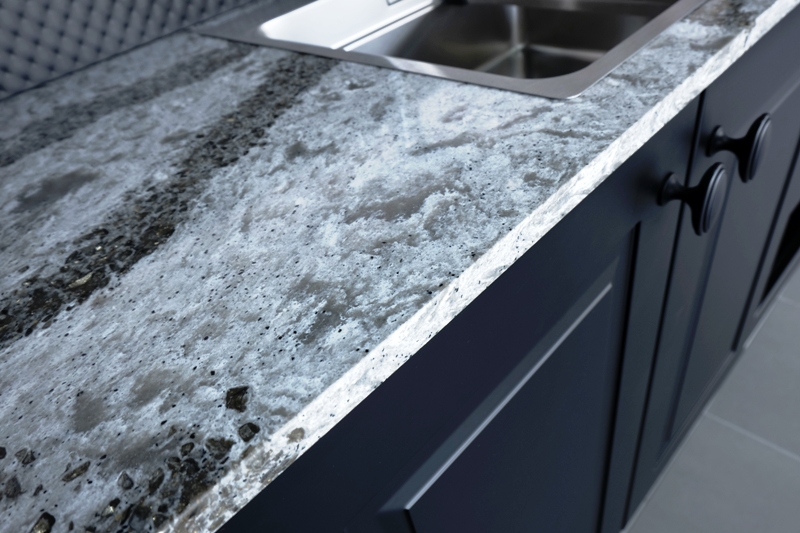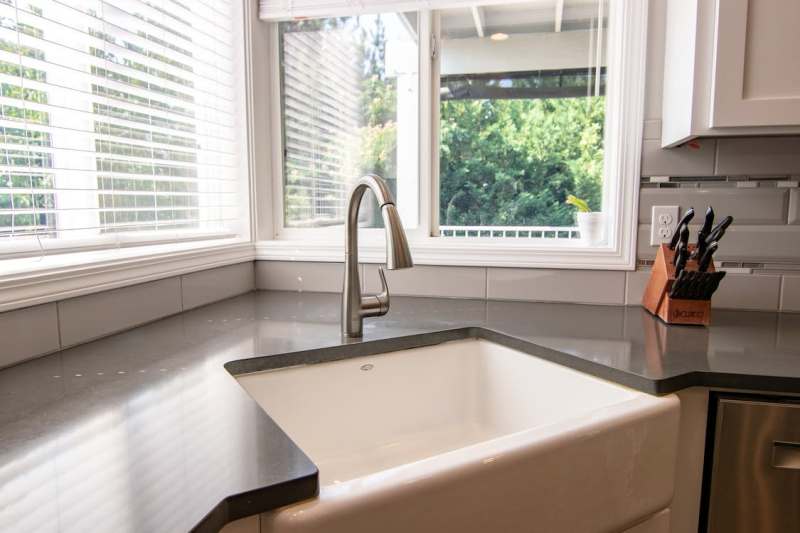Which Sink to Choose for Your Kitchen
The choice of a sink depends, above all, on your needs, desires, and technical constraints. To help you choose your sink, here are some indications of the shape, the type of installation, and the different materials.
Types of installation of the kitchen sink

Depending on the layout of your kitchen, you have a choice of three installation options for your kitchen sink:
– The sink is to be placed on a cabinet. It must have the same dimensions as the cabinet on which it is to be placed. The advantage is that you can place your sink wherever you want, as long as you have the necessary water inlets and drains. Moreover, the installation of a sink to be installed is fast and accessible to non-professionals.
– The built-in sink is the most common type of installation. It is inserted into the worktop that has been cut out beforehand. You can find this model in different shapes, sizes, materials, and colors. On the other hand, the installation requires more precision than a drop-in sink, but maintenance is easier.
– The integrated sink is installed under the worktop, which is why they are also called under-mount sinks. This is the latest trend among kitchen designers because this type of installation allows a smooth design worktop. However, the installation is difficult, and it is advisable to call a professional.
Kitchen sink models: basins and shapes
Number of bowls
The number of basins is significant for the future use of your sink:
– The 1-tank sink (with or without a drainer) is ideally suited to small kitchens. Regarding your budget, the single bowl sink is the most advantageous.
– The one-and-a-half bowl sink (with or without a drainer) is a good compromise. It is convenient and allows you to wash fruits and vegetables in a small bowl and store dishes in the second one. It is a good solution for a small kitchen because it allows freeing a maximum of the work surface.
– The double sink (with or without a drainer) is the most commonly used model. It is practical and functional and often comes with a drainer. Two basins are ideal for a large family, allowing you to wash and rinse simultaneously. The double bowl sink comes in two forms: you can choose either two identical bowls, or a large bowl and a smaller bowl, to which you can add a drainer.
Shapes of kitchen sinks
There are four shapes of sinks for your kitchen, to be chosen according to your desires, needs, and constraints:
– The rectangular sink is the most classic and functional model. With or without a drainer, it comes in many different sizes. Moreover, it adapts to all kitchens.
– The corner sink is also convenient. It allows you to adapt to more complex kitchen configurations, especially when the work surface is at an angle. It is therefore used to save space. Most often, it takes up less than 1 m².
– The round sink is more aesthetic but less practical. With one or two basins, it is most often used for washing fruits and vegetables and is associated with a dishwasher.
– The square sink is between the functional and the design. This shape is usually found in single-bowl sinks. It takes up very little space, which makes it ideal for small kitchens. In addition, it is often combined with a dishwasher.
Kitchen sink materials
There are many materials for kitchen sinks, but some are more commonly used because of their resistance to shocks, their ease of maintenance, and their quality/price ratio:
– Stainless steel is the most commonly used material for kitchen sinks. It is light, resistant to heat, impact, and corrosion, and easy to maintain. Stainless steel sinks remain inexpensive, even though the price of stainless steel has risen sharply. Two small drawbacks: scratches and the need to wipe off water stains.
– Also very common, sinks made of synthetic materials offer a modern style. These materials are divided into acrylic resins (e.g., Corian©) and acrylic stones (e.g., quartz). They are trendy because they come in different shapes and colors. In addition, they are very resistant to chemicals and high temperatures.
– More classic, you can also opt for a ceramic sink. Timeless, it is resistant to stains and heat and is easy to maintain. Its two major drawbacks are its weight (which can make it difficult to install) and its fragility against shocks.
– The last material that is both traditional and very trendy is stone. The many types of stone (marble, granite…) offer a wide choice of styles and aspects. A stone sink does not fear shocks, high temperatures, or scratches, but it is still difficult to install because of its weight.
Kitchen faucets: what style and what price?
What style for what price?
The criteria for choosing a faucet are simple: style and price. There are all styles, all colors, and finishes (gold, chrome, nickel, stainless steel, aluminum…). You can therefore let your imagination run wild.
A must: quality
A faucet is turned on more than 25 times a day: it is, therefore, important to choose a good quality faucet. Ask your kitchen designer for it “as a gift” to conclude a negotiation!
Mixer or faucet?

The mixer and the faucet are the two main types of taps on the market.
Mixers are the classic faucets where hot and cold water are separated. Mixers, on the other hand, have a single lever that allows you to adjust the temperature and flow rate with one hand, thus saving money. The savings are even more significant in the case of a thermostatic mixing valve since it allows for pre-adjustment and, therefore, immediate tempered water. Adding a hand shower to your mixer is also possible for more comfort.
Otherwise, you are spoiled for choices with various styles, designs, and prices!


